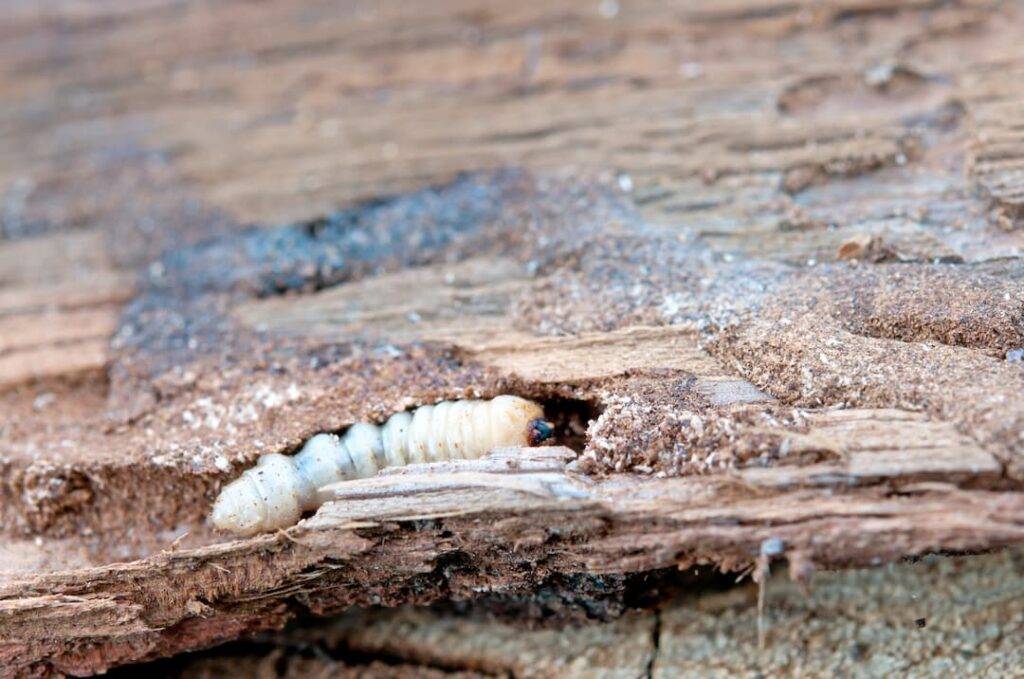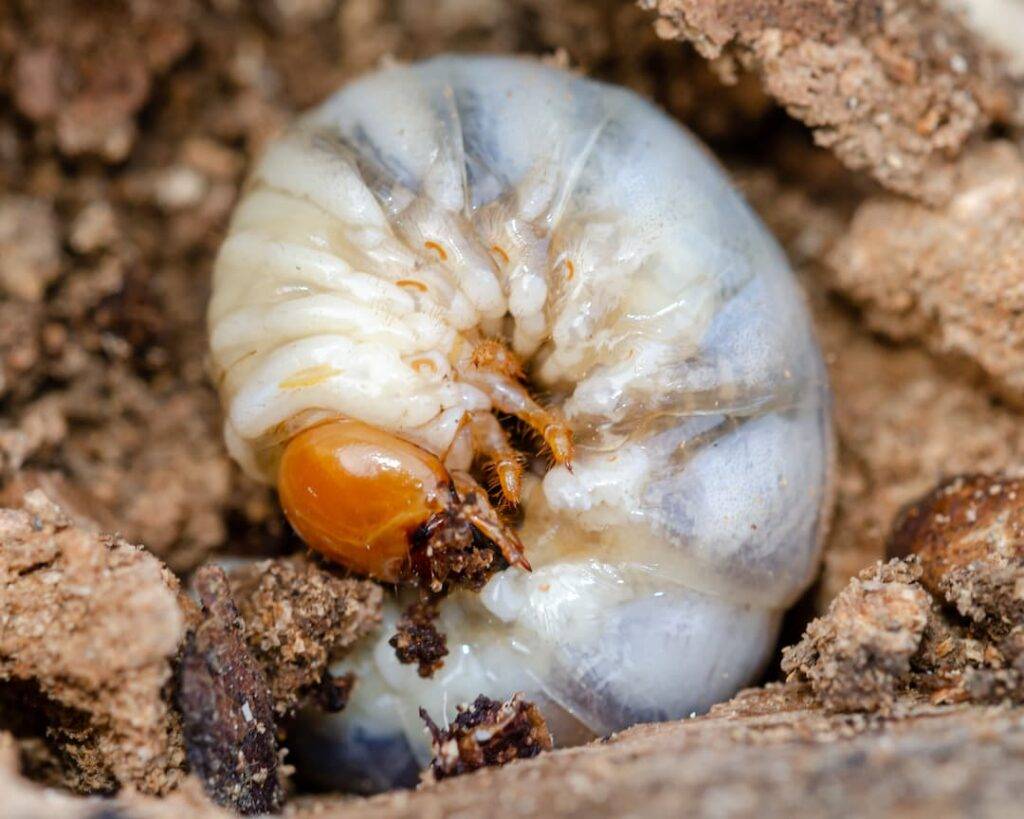Knowing the warning signs indicating the presence of woodworm could save you more than just money. Woodworm can be a plague for home owners and business owners alike, and an infestation can do significant structural damage to your timber. These pesky beetles (that’s right, not worms) destroy furniture, antiques and even roof beams and supports! Keep reading to discover what to look out for, and what to do if you are impacted.

Sign 1. You Can See Active Woodworm
The woodworm themselves may not be the first thing you spot, but their presence is of course the #1 sign they are active. There are four lifecycle stages you may witness:
Woodworm Eggs
Tiny lemon-shaped eggs can on occasion be seen in the cracks and crevices of woodwork. Eggs indicate an active infestation, however, they are so small they are rarely detected by home and business owners.
Woodworm Larvae
Woodworm larvae (grubs) are less likely to be seen, as they spend most of their time within the timber. Should they make an appearance, you’ll see a small, white maggot-like grub, around 2mm in length. Unfortunately, this is when the majority of damage is caused, as the larvae bore through the wood.
Dead Beetles
Households are most likely to spot the carcasses of woodworm beetles. Clusters of dead bugs could indicate an issue, however, this doesn’t determine if infestations are active. Instead, look out for these other signs as well.
Live Beetles
There are a number of woodworm species. All of them are shades of brown, red or black and are typically between 3-10 mm in length. Contrary to what the name suggests, woodworm are in fact beetles. The most prevalent species in the UK is the common furniture beetle (anobium punctatum), a smaller variety that’s distinguishable by its reddish-brown hue and lines down its wings.

Sign 2. Small Holes In Your Woodwork
Sign 3. Weak Floorboards & Timber
Woodworm bore a network of tunnels through solid timber. The result, wood becomes weaker, softer, and more easily damaged.
Examples include:
- Puncturing wood, such as floorboards, with furniture or heels.
- The edges of wooden surfaces, such as rafters, are crumbling.
- The aforementioned presences of beetle exit hole and tunnels.


